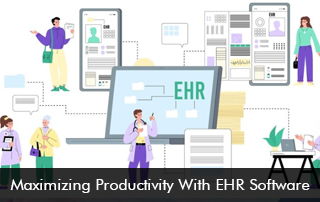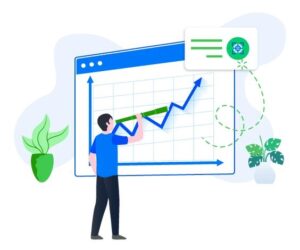Maximizing productivity with EHR software is a major concern for many healthcare providers. The whole point of medical software is to simplify and streamline workflows and efficient medical practices. By leveraging the power of EHR software, healthcare providers can optimize their operations. Here’s how:
Centralized and Accessible Patient Information
EHR software allows healthcare professionals to store, organize, and access patient information from a centralized digital platform. This eliminates the need for paper-based records and manual data entry, reducing the chances of errors and saving valuable time. Therefore, with instant access to comprehensive patient data, healthcare providers can make informed decisions, collaborate seamlessly, and deliver personalized care efficiently.
Streamlined Workflows
EHR software streamlines workflows by automating various administrative tasks, such as appointment scheduling, billing, and documentation. These systems can generate automated reminders, alerts, and notifications, ensuring that healthcare providers stay on top of important tasks and deadlines. As a result, healthcare professionals can focus more on patient care, resulting in increased productivity.
Efficient Communication and Collaboration Maximize Productivity with EHR
EHR software enhances communication and collaboration among healthcare professionals within an organization. Additionally, it enables secure messaging, sharing of patient data, and real-time collaboration on treatment plans. Physicians, nurses, and other healthcare staff can easily access and update patient records, share test results, and coordinate care plans. Improved communication leads to faster decision-making and better coordination, ultimately improving productivity and patient outcomes.
Data-Driven Insights and Analytics
EHR software captures and analyzes large amounts of data, offering valuable insights that can drive improvements in productivity and patient care. Moreover, advanced analytics tools within EHR systems can identify patterns, trends, and areas for process optimization. By leveraging this data, healthcare organizations can identify bottlenecks, streamline operations, and make data-backed decisions that maximize efficiency.
Integration with Other Systems
EHR software can integrate with other healthcare systems and technologies, such as laboratory information systems and pharmacy systems. This integration eliminates manual data entry and duplication of efforts, ensuring seamless information flow across various departments. For example, integrating EHR software with a pharmacy system can automate prescription processing, saving time for both healthcare providers and patients.
Mobile Accessibility Means More Productivity With EHR
Modern EHR software often comes with mobile applications, allowing healthcare providers to access patient records and manage tasks on the go. With mobile accessibility, physicians can view patient information, update records, and communicate with colleagues from anywhere, enhancing productivity and flexibility. In fact, mobile EHR solutions are especially beneficial for home healthcare providers, enabling them to provide quality care while reducing administrative overhead.








